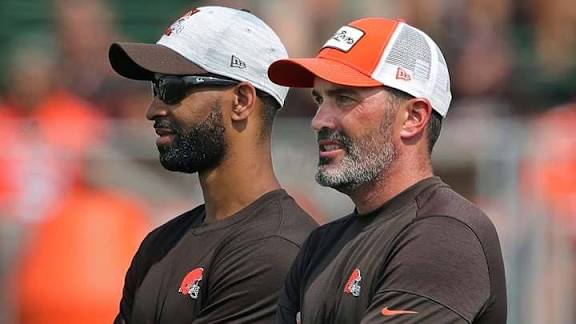“It’s a big moment for you…. ,” said the pre-match television interviewer stationed outside the locker room. “But I think you like the big stages.”
“Yeah,” the Italian player with the Mona Lisa smile responded, adding in endearingly halting English, “I am exciting.”
With that, little-known Camila Giorgi, a 21-year-old who could pass for 14, walked through the tunnel and onto the court at New York City’s Arthur Ashe Stadium, tennis’s largest venue both physically and metaphorically. In diminishing twilight on this Saturday of Labor Day weekend, Giorgi was greeted by indifferent if polite applause from the 20,000 or so fans in the stands.
The bona fide ovation came when Giorgi’s opponent appeared. Caroline Wozniacki of Denmark, the former top-ranked player and current fiancée of Rory McIlroy, would be on the other side of the net for this third-round match at the 2013 U.S. Open.
Though Giorgi was ranked so modestly that she’d had to qualify to get into the main draw, she was, as the TV interviewer had predicted, hardly cowed. Striking the ball uninhibitedly, taking chances and showing off a whimsical, versatile game, she hung with Wozniacki for more than two hours. As her father, Sergio, pumped his fists in the stands, and his spectacular head of Einstein hair — the subject of innumerable cutaways in the TV coverage — shook in the night breeze, Camila pushed the match to a third set.
By then the winsome journeywoman had won over the crowd. Punching above her weight class (generously listed at 5-foot-6 and 119 pounds, she was still giving up four inches to her opponent), Giorgi dictated points and pasted 46 winners to Wozniacki’s 13. She closed out the match 4-6, 6-4, 6-3, winning what Robert Lansdorp, the renowned coach, would judge “the most surprising match” of the women’s draw.
By reaching the fourth round, Giorgi boosted her ranking to No. 79 and was guaranteed $162,190, the biggest payday of her career. After match point against Wozniacki, as Sergio did a tarantella in the stands, Camila stood beaming on the court. “Hey there, Giorgi girl!” the courtside interviewer gushed. When Giorgi responded to questions with staccato answers that revealed her shaky grasp of English, it only expanded her constituency of admirers. She left to a standing ovation.
As breakthroughs go, you could do worse. Giorgi celebrated with her father outside the locker room. Meanwhile, a chortle of aggrieved investors, from the United States to Tel Aviv, had the same thought: Maybe now I’ll finally get my money back.
The great myth about tennis: It’s a country-club sport, province of the wealthy and privileged. The reality: You can find a decent racket for $150 that will last years. A can of balls costs $3, slightly more than it did in the 1980s. And there are abundant public courts worldwide.
The prohibitive expense comes from trying to make it as a professional. The USTA recently estimated that the annual expenses of a fledgling pro, including coaching, equipment and travel, total roughly $143,000. Most players in the WTA and ATP computer rankings are members of the tours’ working poor. While a star like Wozniacki earns tens of millions of dollars in prize money and endorsements and has residences all over the world, Giorgi’s life is entirely different. She flies coach. She buys her own sneakers. Yes, she’s played Wimbledon, but she’s also played low-level events in Albuquerque, Charlottesville (Va.) and Clearwater (Fla.). In the last of those her run to the quarterfinals earned her a check for $686.
In part, this is a story of the financial strains under which so many players operate. Camila was introduced to tennis at age five, when Sergio took her to a club in Italy. Her talent was glaringly obvious, and by age eight she had caught the eye of agents, including Max Eisenbud of IMG, who represents Maria Sharapova. But when Camila turned pro at 14, her parents faced a dilemma: With three other kids at home, where would they find the resources to help incubate Camila’s career? Camila and Sergio, a native of Argentina who had been a soccer player of some distinction, often traveled together and found ways to economize. For instance, taking an overnight train to tournaments in Europe meant saving the cost of a night’s lodging. Even so, their finances were tight.
In early 2010, just after Camila turned 18, the family received an intriguing offer. Sandy Mittleman, a longtime pro at various tennis facilities, including Nick Bollettieri’s Florida academy, was working at an athletic club in Manchester-by-the-Sea, Mass. Mittleman was tasked with increasing the club’s international business. Taking a leaf from the Bollettieri playbook, he looked for a promising potential pro to sponsor. It would be a loss leader of sorts: Mittleman would pay for the player’s training, and his or her future success as a pro would generate interest in the facility.
Mittleman tooled around on YouTube and was struck by an Italian girl, modest in physique but endowed with considerable power: Camila Giorgi. Through Facebook, he contacted Camila, who put him in touch with Sergio. Mittleman arranged for the Giorgis to fly to Massachusetts. “I spent an hour with her on the court, because I wanted to feel her game for myself,” says Mittleman. “I knew right away that this girl could be a top 10 player.”
According to Mittleman, he and Sergio Giorgi seized on a better idea: They would find private sponsors to invest in Camila’s career. While the terms of these relationships vary, they are fairly common in tennis, particularly among players of modest means. A benefactor, not unlike the owner of shares in a racehorse, fronts the money for training and travel in exchange for a cut of future earnings.
(Neither Sergio nor Camila Giorgi responded to SI’s repeated requests for comment about this story via email, Facebook and the WTA Tour.)
It’s a business relationship, but there’s often an element of noblesse oblige. Mittleman connected the Giorgis to a wealthy Connecticut couple who were excited to help a young player. (Under the contract, the couple’s identities cannot be revealed, Mittleman says.) The couple would pay two years’ worth of Camila’s expenses in exchange for a percentage of her prize money. The Giorgis moved to Connecticut to be closer to the family. Mittleman went as well, quitting his club job to work solely with Camila.

